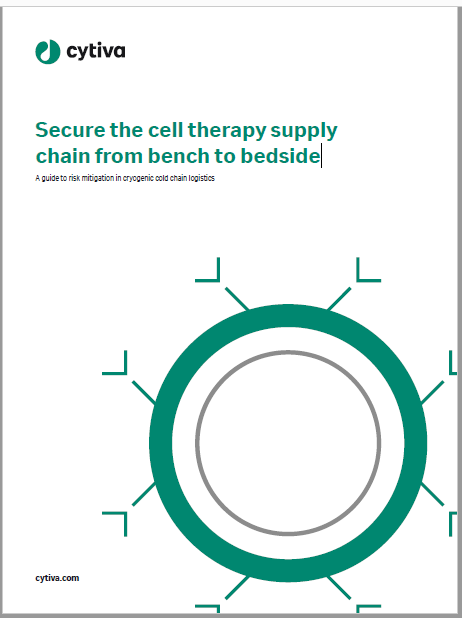

How can pharma and life sciences be prepared and agile enough to respond to future challenges if it has not thought about the current trends and emerging challenges? It’s a question that Pistoia Alliance operations team member John Wise has asked, and one that the not-for-profit life sciences organisation hopes to answer in its 2030 Life Sciences and Health Go Digital report, which Wise co-authored alongside the alliance’s CEO Steve Arlington.
The report is based on discussions from three workshops – two in the US, one in the UK – between 75 subject matter experts from 65 different organisations within the life science, research and development (R&D) and healthcare eco-system.
Wise sees the rate of change in the in the industry as “quite profound” and “exponentially increasing as technology is employed in scientific method”. But what are the most interesting potential changes that life sciences companies need to be prepared for in 2030?
Towards outcomes-based drug reimbursement
Wise notes that now, in 2020, “there is a possibility to cure diseases, which, until quite recently, were incurable” through innovations in gene and cell therapies. He gives the examples of GSK treating the adenosine deaminase deficiency – known colloquially as the boy in the bubble syndrome – with gene therapy Strimvelis and Novartis’s spinal muscular atrophy gene therapy Zolgensma.
However, these remarkable innovations in precision and personalised medicine are accompanied by “price tags which are quite extraordinary”; Zolgensma is the most expensive drug in the world, costing over £2m per patient.
Therefore, as the industry moves further into a personalised medicine paradigm, society, health services and pharma “need to think of different ways of reimbursing treatments”, Wise notes. The report says the one-size-fits-all approach where people ‘pay per pill’ is becoming outdated and there will be a transition towards payment based on outcomes.
This means that if the treatment is successful over a period of time, then the company will be reimbursed, however, “if it’s not, then reimbursement will have to be diminished pro rata.” The report notes that accurate measuring outcomes will be supported by the use of medical devices, such as wearables, by 2030.
Wise believes that healthcare expenditure should be treated more long-term like a mortgage. “You don’t try to buy a house in a year, you buy it over 25 years,” he notes.
However, he does acknowledge that this payment model needs careful thought as if treatments are not reimbursed, then this may challenge future R&D investment by companies.
Focusing on prevention rather than treatment
As well as moving from treating symptoms to actually curing disease, another core theme of the Pistoia Alliance’s 2030 retrospective report is also transitioning to prevention of disease.
The report predicts that diagnosis in 2030 will be largely determined and improved by artificial intelligence (AI). However, AI and machine learning (ML)’s use in diagnosis will not be fully automated.
Instead, in the example of image analysis given by Wise, AI will assist medical experts, such as histopathologists, and improve outcomes by flagging the interesting or worrying cases. Wise also comments this would help to reduce the labour challenges facing healthcare providers and systems across the world.
Wise also thinks AI could help to speed up genomic analysis and associated diagnosis, which remains expensive, despite reductions in the cost of genomic sequencing itself.
AI’s increasing role in diagnosis may shift the role of physicians into being more like patient educators, responding to what the AI systems conclude, according to the report.
Another element of progress predicted for 2030 is liquid next generation sequencing to allow for better screening of cancer patients. Wise explains that “being able to sequence circulating tumour DNA would be useful because it allows for the understanding of the heterogeneity of cancer tumours”, which cannot be done by standard biopsies of single tumours.
He argues “If we start including this analysis into typical tests at GP surgeries, think of the cancers that will be picked up early”, which contributes to the “probability of turning cancer into a manageable disease in 2030” and becoming more like HIV, which is no longer considered a death sentence as it once was.
Real-world data: empowering patients, but need to alleviate privacy concerns
The Pistoia Alliance 2030 report focuses on real-world data as a patient centricity-focused innovation as it allows for more efficient clinical trials and fully connected healthcare systems.
In the clinical trial space, the report predicts more data will be collected both within and outside the study sites from wearables and other digital solutions, thereby simplifying the patient’s clinical trial experience.
However, an increase in real world data collection and use is already causing concerns about patient privacy. Wise emphasises the need for life science stakeholders to “get the contract with society right” and “make sure the public understand that exploiting national health data [for instance] is a good thing and why”. People are often nervous and suspicious of pharma companies and their potential misuse of sensitive health data.
The report hopes that storing patient data into blockchain-enabled databases will improve security, as well as the ability to share this data to appropriate parties with the patient’s consent.
Wise notes that this sharing of medical data must be based on commonly agreed regulatory standards. A similar standards-focused approach about the clinical usefulness of real-world data will also help regulators as they continue to adapt their health technology assessment procedures, something the report views as likely to improve by 2030, although the rate of change continues to outpace the regulators’ response.
Cell & Gene Therapy Coverage on Pharmaceutical Technology supported by Cytiva.
Editorial content is independently produced and follows the highest standards of journalistic integrity. Topic sponsors are not involved in the creation of editorial content.



